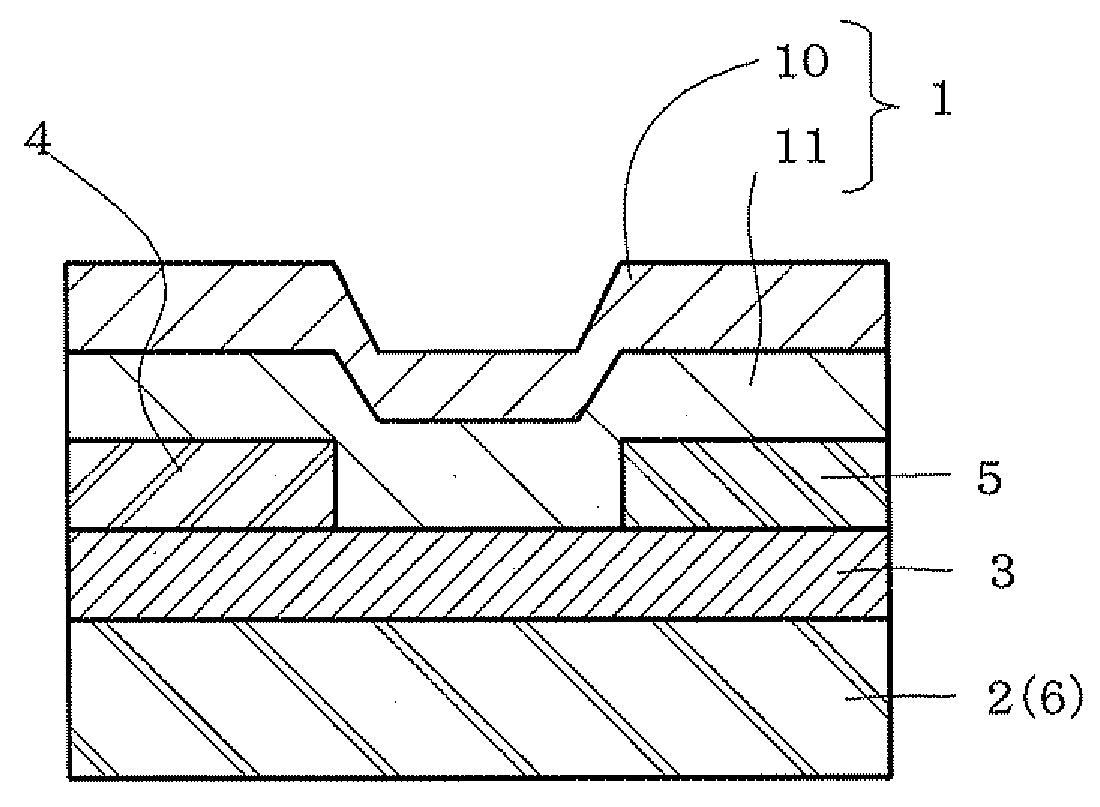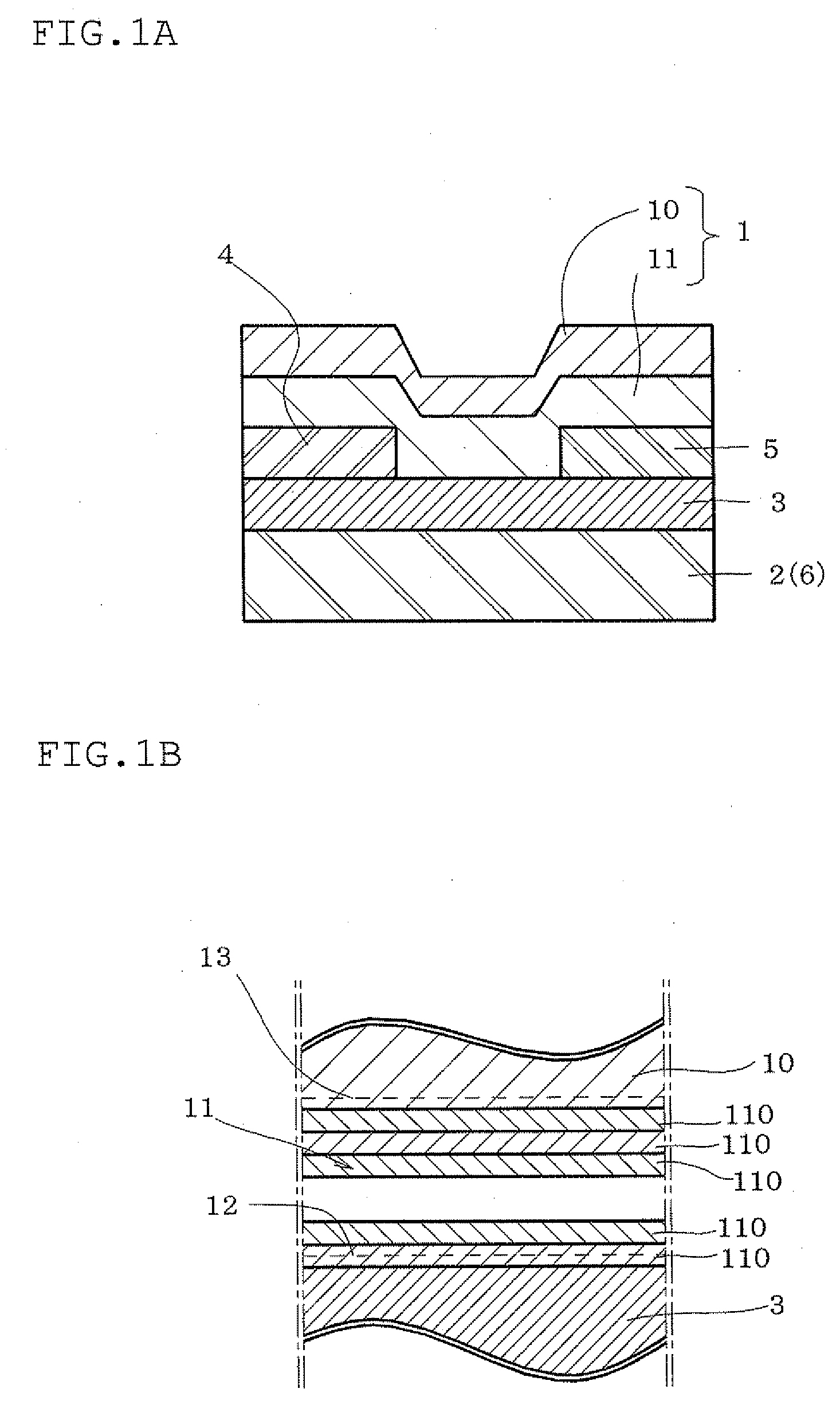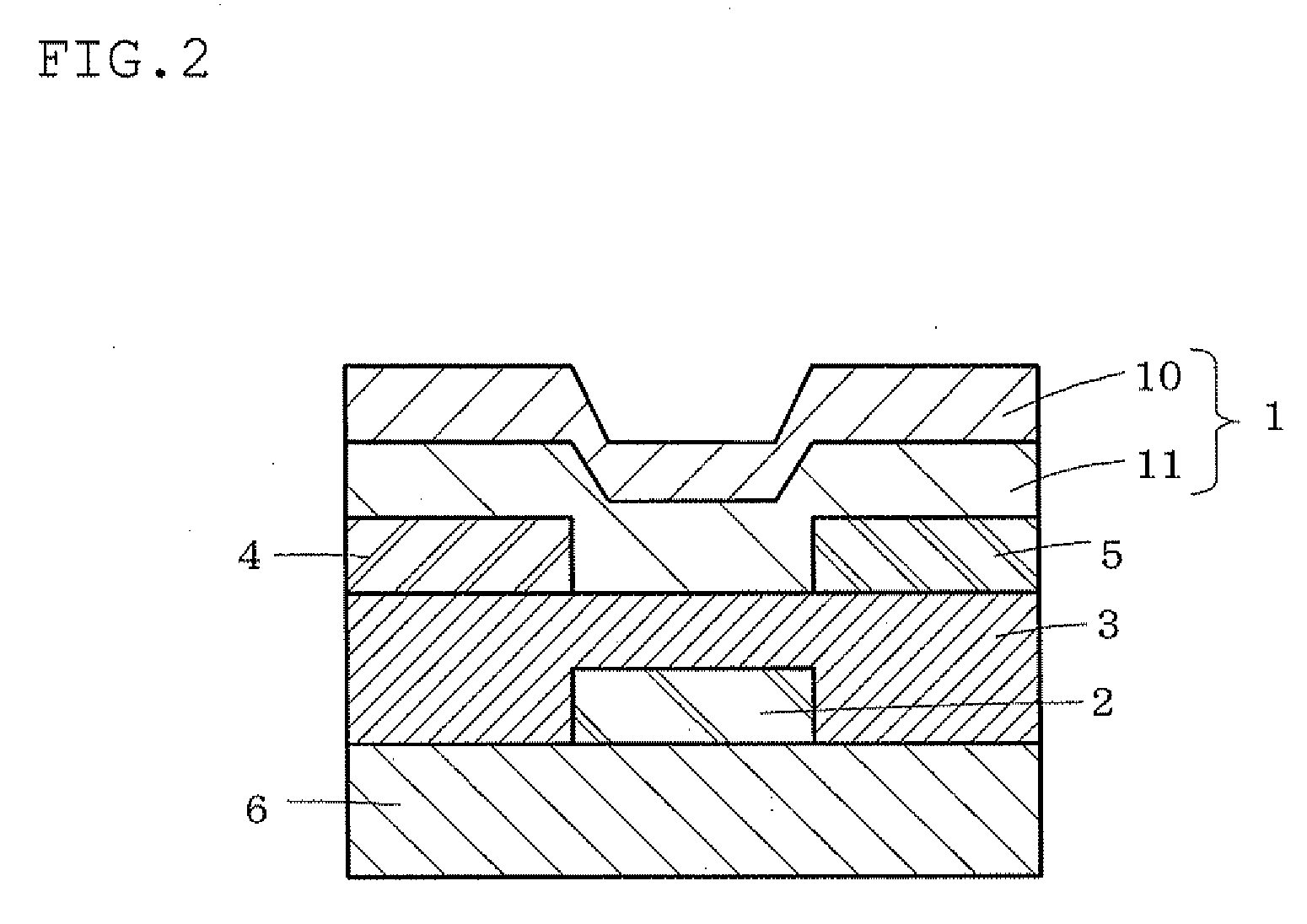Semiconductor, semiconductor device, complementary transistor circuit device
a technology of complementary transistors and semiconductors, applied in the direction of semiconductor devices, thermoelectric device junction materials, electrical apparatus, etc., can solve the problems of difficult circuit design or the like, difficult to achieve practical use of circuits, and difficult to control the conductivity type of channels by doping with impurities, so as to facilitate the formation of organic semiconductor layers, reduce the production cost of the entire circuit device, and reduce the effect of production cos
- Summary
- Abstract
- Description
- Claims
- Application Information
AI Technical Summary
Benefits of technology
Problems solved by technology
Method used
Image
Examples
first embodiment
[0075]FIG. 1 shows a schematic cross-sectional view of the semiconductor and the semiconductor device according to the first embodiment of the invention.
[0076]As shown in FIG. 1, the semiconductor device of this embodiment is provided with a semiconductor 1, a first electrode 2, an insulating layer 3 interposed between the semiconductor 1 and the first electrode 2, a second electrode 4 disposed nearer to the semiconductor 1 than the insulating layer 3, and a third electrode 5 which is detached from the second electrode 4 and disposed nearer to the semiconductor 1 than the insulating layer 3. The semiconductor 1 of this embodiment is formed of an organic semiconductor layer 10 and an oxide semiconductor layer 11.
[0077]This semiconductor device, which can be used as a field effect transistor (FET), a light-emitting element, a light-receiving element, and the like, has a configuration that the layers in the form of a thin film are stacked on a substrate 6.
[0078]Specifically, the semico...
second embodiment
[0163]FIG. 2 shows a schematic cross sectional view of the semiconductor and the semiconductor device according to the second embodiment of the invention.
[0164]The semiconductor device of this embodiment is substantially similar to the semiconductor device in the first embodiment, except that the substrate 6 and the first electrode 2 are provided separately.
[0165]Specifically, in the semiconductor and the semiconductor device in this embodiment, the first electrode 2 is separately provided in the middle of the substrate 6. This first electrode 2 is formed of the material used in the second and third electrodes 4 and 5 in the first embodiment. The insulating layer 3 is provided on the substrate 6 as well as on the first electrode 2.
[0166]Except for the above, the configuration of the semiconductor and the semiconductor device in this embodiment is the same as that in the first embodiment.
[0167]The semiconductor device in this embodiment is used as a field effect transistor as in the ...
third embodiment
[0169]FIG. 3 shows a schematic cross sectional view of the semiconductor and the semiconductor device according to the third embodiment of the invention.
[0170]In the semiconductor device of this embodiment, unlike the semiconductors of the above-mentioned embodiments, the second and third electrodes 4 and 5 are not interposed between the insulating layer 3 and the oxide semiconductor layer 11, and are provided on the top of the organic semiconductor layer 10.
[0171]Since the insulating layer 3, the oxide semiconductor layer 11, and the organic semiconductor layer 10 are all provided between the first electrode 2(6) and the second and third electrodes 4 and 5, a field can be applied effectively to allow the semiconductor characteristics to be developed easily. In addition, the second and third electrodes 4 and 5 are in direct contact with the organic semiconductor layer 10, the semiconductor easily develops ambipolar characteristics even when mobility of the organic semiconductor is l...
PUM
 Login to View More
Login to View More Abstract
Description
Claims
Application Information
 Login to View More
Login to View More - R&D
- Intellectual Property
- Life Sciences
- Materials
- Tech Scout
- Unparalleled Data Quality
- Higher Quality Content
- 60% Fewer Hallucinations
Browse by: Latest US Patents, China's latest patents, Technical Efficacy Thesaurus, Application Domain, Technology Topic, Popular Technical Reports.
© 2025 PatSnap. All rights reserved.Legal|Privacy policy|Modern Slavery Act Transparency Statement|Sitemap|About US| Contact US: help@patsnap.com



